Determining Optimal Assembly Condition for Lens Module Production by Combining Genetic Algorithm and C-BLSTM
Abstract
1. Introduction
2. Proposed Framework
2.1. Overview and Graphical User Interface (GUI)
| Algorithm 1 The operation procedure of the inference system GUI |
Optimal assembly conditions for producing a lens module 1-1. Load features from an SQL table by selecting data such as part lens mold, part lens production date, barrel mold, and barrel production date. Except unusable part lenses by selecting cavity numbers. 1-2. Apply the dataset, which is imported instantaneously. 2-1. Determine main parameters such as population size, generation size, selection rate, mutation rate, and the dimension of MTF in the Parameter 1 section. Additionally, import CSV files of rule, past combination, and feature maximum spec. 2-2. Since the Parameter 2 section contains the core parameters of the algorithm, it is unable to change without determination by a developer. 2-3. Save setting all parameters. 3. Execute the framework of GA. 4. Finally, the optimal assembly conditions of part lens cavities after one-to-one matching with barrel cavities, and their predicted performances are exhibited as outputs. |
2.2. Determining the Optimal Set of Cavity Number Combinations
2.2.1. Determining a Set of Part Lens Cavity Number Combinations
Basic Principles of GA
Chromosome Representation
Initial Population Generation
Fitness Evaluation
Selection
Crossover
Mutation
2.2.2. Selecting Barrel Cavity Number
2.3. Determining the Optimal Directional Angle Combinations
2.3.1. Feature Extraction
2.3.2. Directional Angle Prediction
3. Discussion on Generalization
3.1. Need for Generalization
3.2. Possible Approaches
4. Experiments
4.1. Data Illustration
4.2. Experimental Settings
4.3. Experimental Results
4.3.1. Performances of Determining the Optimal Set of Cavity Number Combinations
4.3.2. Performances of Determining the Optimal Set of Directional Angle Combinations
4.3.3. Performances of Generalization
5. Assembly Test and Result
6. Conclusions
Author Contributions
Funding
Data Availability Statement
Conflicts of Interest
References
- Ji, W.; Wang, L. Big Data Analytics Based Fault Prediction for Shop Floor Scheduling. J. Manuf. Syst. 2017, 43, 187–194. [Google Scholar] [CrossRef]
- Lee, J.; Lee, Y.C.; Kim, J.T. Fault Detection Based on One-Class Deep Learning for Manufacturing Applications Limited to an Imbalanced Database. J. Manuf. Syst. 2020, 57, 357–366. [Google Scholar] [CrossRef]
- Lee, H. Framework and Development of Fault Detection Classification Using IoT Device and Cloud Environment. J. Manuf. Syst. 2017, 43, 257–270. [Google Scholar] [CrossRef]
- Wang, P.; Yan, R.; Gao, R.X. Virtualization and Deep Recognition for System Fault Classification. J. Manuf. Syst. 2017, 44, 310–316. [Google Scholar] [CrossRef]
- Long, J.; Mou, J.; Zhang, L.; Zhang, S.; Li, C. Attitude Data-Based Deep Hybrid Learning Architecture for Intelligent Fault Diagnosis of Multi-Joint Industrial Robots. J. Manuf. Syst. 2021, 61, 736–745. [Google Scholar] [CrossRef]
- Stern, M.L.; Schellenberger, M. Fully Convolutional Networks for Chip-Wise Defect Detection Employing Photoluminescence Images: Efficient Quality Control in LED Manufacturing. J. Intell. Manuf. 2021, 32, 113–126. [Google Scholar] [CrossRef]
- Zhang, Y.; You, D.; Gao, X.; Zhang, N.; Gao, P.P. Welding Defects Detection Based on Deep Learning with Multiple Optical Sensors During Disk Laser Welding of Thick Plates. J. Manuf. Syst. 2019, 51, 87–94. [Google Scholar] [CrossRef]
- Yun, J.P.; Shin, W.C.; Koo, G.; Kim, M.S.; Lee, C.; Lee, S.J. Automated Defect Inspection System for Metal Surfaces Based on Deep Learning and Data Augmentation. J. Manuf. Syst. 2020, 55, 317–324. [Google Scholar] [CrossRef]
- Yun, J.; An, H.; Choi, Y. A Machine Learning Based Facility Error Pattern Extraction Framework for Smart Manufacturing. J. Soc. E-Bus. Stud. 2018, 23, 97–110. [Google Scholar]
- Chan, S.L.; Lu, Y.; Wang, Y. Data-Driven Cost Estimation for Additive Manufacturing in Cybermanufacturing. J. Manuf. Syst. 2018, 46, 115–126. [Google Scholar] [CrossRef]
- Ning, F.; Shi, Y.; Cai, M.; Xu, W.; Zhang, X. Manufacturing Cost Estimation Based on a Deep-Learning Method. J. Manuf. Syst. 2020, 54, 186–195. [Google Scholar] [CrossRef]
- Machalek, D.; Powell, K. Automated Electrical Demand Peak Leveling in a Manufacturing Facility with Short Term Energy Storage for Smart Grid Participation. J. Manuf. Syst. 2019, 52, 100–109. [Google Scholar] [CrossRef]
- Beheshti, Z.; Shamsuddin, S.M.H. A Review of Population-Based Meta-Heuristic Algorithm. Int. J. Adv. Soft Comput. Its Appl. 2013, 5, 1–35. [Google Scholar]
- Ono, I.; Kobayashi, S.; Yoshida, K. Optimal Lens Design by Real-Coded Genetic Algorithms Using UNDX. Comput. Methods Appl. Mech. Eng. 2000, 186, 483–497. [Google Scholar] [CrossRef]
- Fang, Y.C.; Tsai, C.M. Miniature Lens Design and Optimization With Liquid Lens Element via Genetic Algorithm. J. Opt. A Pure Appl. Opt. 2008, 10, 075304. [Google Scholar] [CrossRef]
- Le, W.; Jia, X.; Hsu, Y.M.; Liao, C.H.; Wang, Y.; Lin, M.T.; Lee, J. A Novel Methodology for Lens Matching in Compact Lens Module Assembly. IEEE Trans. Autom. Sci. Eng. 2023, 20, 741–750. [Google Scholar]
- Min, H.; Choi, Y.; Son, Y.; Kim, S. Method for Optimizing Lens Module Assembly. KR 10-2021-0023177 22 February 2021. [Google Scholar]
- Li, W.; Zhang, L.; Wu, C.; Wang, Y.; Cui, Z.; Niu, C. A Data-driven Approach to RUL Prediction of Tools. Adv. Manuf. 2024, 12, 6–18. [Google Scholar] [CrossRef]
- Liu, T.; Bao, J.; Wang, J.; Zhang, Y. A Hybrid CNN–LSTM Algorithm for Online Defect Recognition of CO2 Welding. Sensors 2018, 18, 4369. [Google Scholar] [CrossRef] [PubMed]
- Li, Z.; Li, J.; Wang, Y.; Wang, K. A Deep Learning Approach for Anomaly Detection Based on SAE and LSTM in Mechanical Equipment. Int. J. Adv. Manuf. Technol. 2019, 103, 499–510. [Google Scholar] [CrossRef]
- Essien, A.; Giannetti, C. A Deep Learning Model for Smart Manufacturing Using Convolutional LSTM Neural Network Autoencoders. IEEE Trans. Ind. Inform. 2020, 16, 6069–6078. [Google Scholar] [CrossRef]
- Goldenberg, D.E. Genetic Algorithms in Search, Optimization and Machine Learning; Addison-Wesley Publishing: Reading, MA, USA, 1989. [Google Scholar]
- Maulik, U.; Bandyopadhyay, S. Genetic Algorithm-Based Clustering Technique. Pattern Recognit. 2000, 33, 1455–1465. [Google Scholar] [CrossRef]
- Ribeiro Filho, J.; Treleaven, P.; Alippi, C. Genetic-Algorithm Programming Environments. Computer 1994, 27, 28–43. [Google Scholar] [CrossRef]
- Mishra, S.; Saha, S.; Mondal, S. GAEMTBD: Genetic Algorithm Based Entity Matching Techniques for Bibliographic Databases. Appl. Intell. 2017, 47, 197–230. [Google Scholar] [CrossRef]
- Haldurai, L.; Madhubala, T.; Rajalakshmi, R. A Study on Genetic Algorithm and Its Applications. Int. J. Comput. Sci. Eng. 2016, 4, 139–143. [Google Scholar]
- Wang, S.; Liu, W.; Wu, J.; Cao, L.; Meng, Q.; Kennedy, P.J. Training Deep Neural Networks on Imbalanced Data Sets. In Proceedings of the International Joint Conference on Neural Networks, Vancouver, BC, Canada, 24–29 July 2016; pp. 4368–4374. [Google Scholar]
- Cho, K.; van Merrienboer, B.; Gulcehre, C.; Bahdanau, D.; Bougares, F.; Schwenk, H.; Bengio, Y. Learning Phrase Representations using RNN Encoder-Decoder for Statistical Machine Translation. arXiv 2014, arXiv:1406.1078. [Google Scholar]
- Krizhevsky, A.; Sutskever, I.; Hinton, G.E. ImageNet Classification with Deep Convolutional Neural Networks. In Proceedings of the Advances in Neural Information Processing Systems, Lake Tahoe, NV, USA, 3–6 December 2012; pp. 1097–1105. [Google Scholar]
- Graves, A.; Liwicki, M.; Fernandez, S.; Bertolami, R.; Bunke, H.; Schmidhuber, J. A Novel Connectionist System for Unconstrained Handwriting Recognition. IEEE Trans. Pattern Anal. Mach. Intell. 2009, 31, 855–868. [Google Scholar] [CrossRef] [PubMed]
- Liu, W.; Wang, Z.; Liu, X.; Zeng, N.; Liu, Y.; Alsaadi, F.E. A Survey of Deep Neural Network Architectures and Their Applications. Neurocomputing 2017, 234, 11–26. [Google Scholar] [CrossRef]
- Ray, A.; Rajeswar, S.; Chaudhury, S. Text Recognition Using Deep BLSTM Networks. In Proceedings of the International Conference on Advances in Pattern Recognition, Kolkata, India, 4–7 January 2015; pp. 1–6. [Google Scholar]
- Liu, J.; Chang, W.C.; Wu, Y.; Yang, Y. Deep Learning for Extreme Multi-Label Text Classification. In Proceedings of the International ACM SIGIR Conference on Research and Development in Information Retrieval, Tokyo, Japan, 7–11 August 2017; pp. 1692–1695. [Google Scholar]
- Li, C.; Zhang, S.; Qin, Y.; Estupinan, E. A Systematic Review of Deep Transfer Learning for Machinery Fault Diagnosis. Neurocomputing 2020, 407, 121–135. [Google Scholar] [CrossRef]
- Jiao, J.; Lin, J.; Zhao, M.; Liang, K. Double-Level Adversarial Domain Adaptation Network for Intelligent Fault Diagnosis. Knowl.-Based Syst. 2020, 205, 106236. [Google Scholar] [CrossRef]
- Weiss, K.; Khoshgoftaar, T.M.; Wang, D. A Survey of Transfer Learning. J. Big Data 2016, 3, 9. [Google Scholar] [CrossRef]
- Ganin, Y.; Ustinova, E.; Ajakan, H.; Germain, P.; Larochelle, H.; Laviolette, F.; Marchand, M.; Lempitsky, V. Domain-Adversarial Training of Neural Networks. J. Mach. Learn. Res. 2016, 17, 1–35. [Google Scholar]
- Deng, L.; Seltzer, M.L.; Yu, D.; Acero, A.; Mohamed, A.; Hinton, G. Binary Coding of Speech Spectrograms Using a Deep Auto-Encoder. In Proceedings of the Annual Conference of the International Speech Communication Association, Makuhari, Chiba, Japan, 26–30 September 2010; pp. 1692–1695. [Google Scholar]
- Jardine, N.; van Rijsbergen, C. The Use of Hierarchic Clustering in Information Retrieval. Inf. Storage Retr. 1971, 7, 217–240. [Google Scholar] [CrossRef]
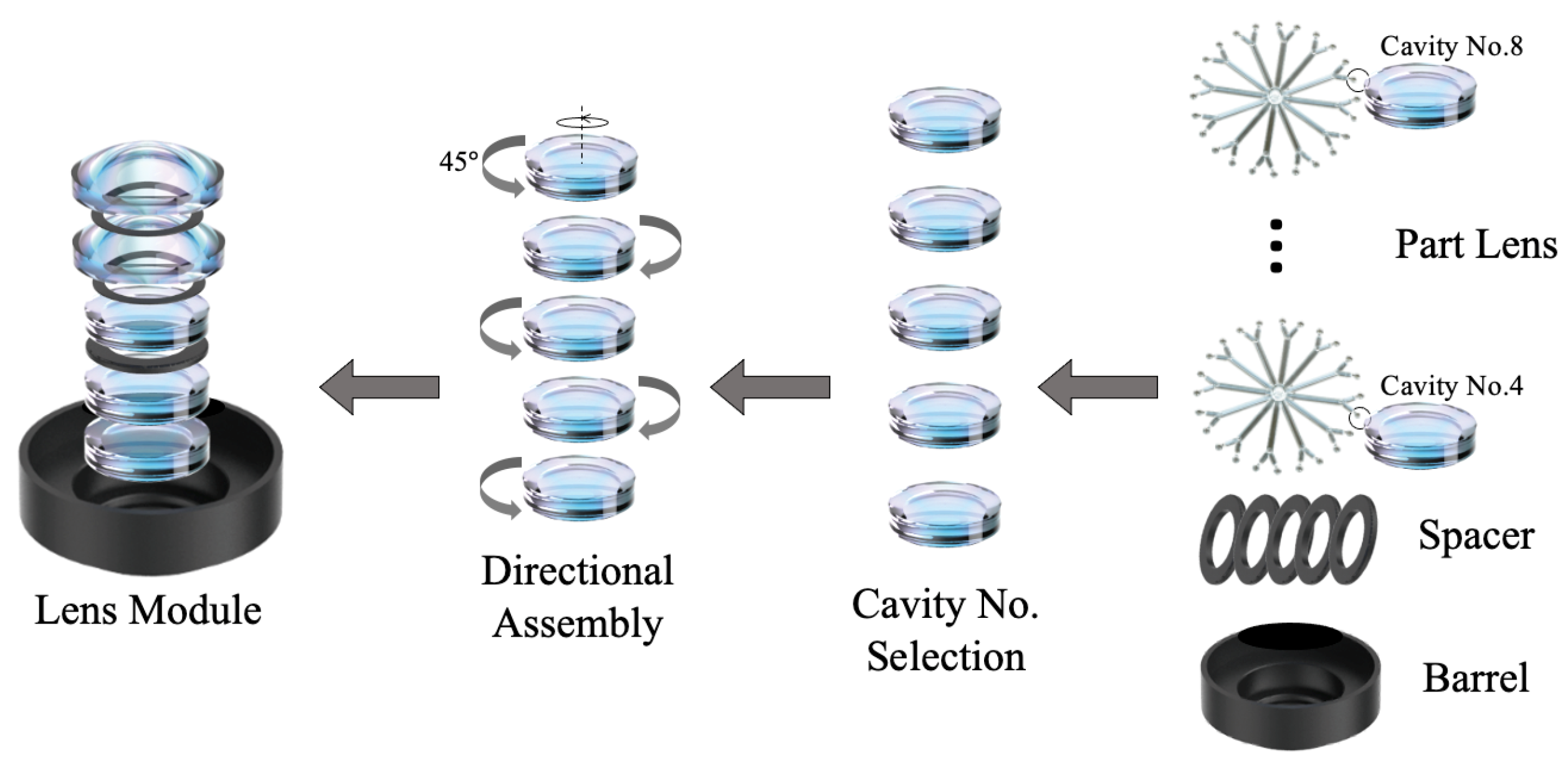
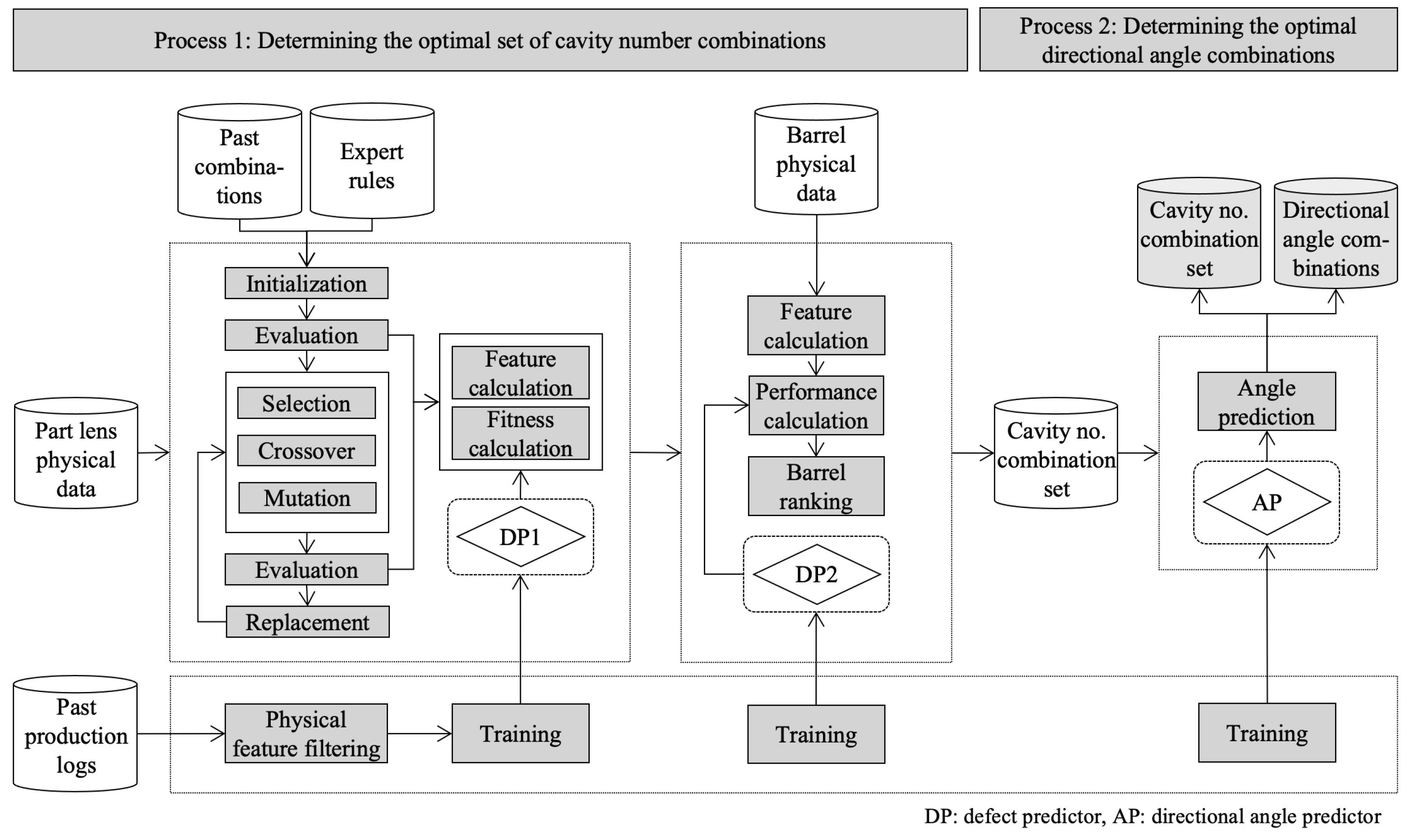
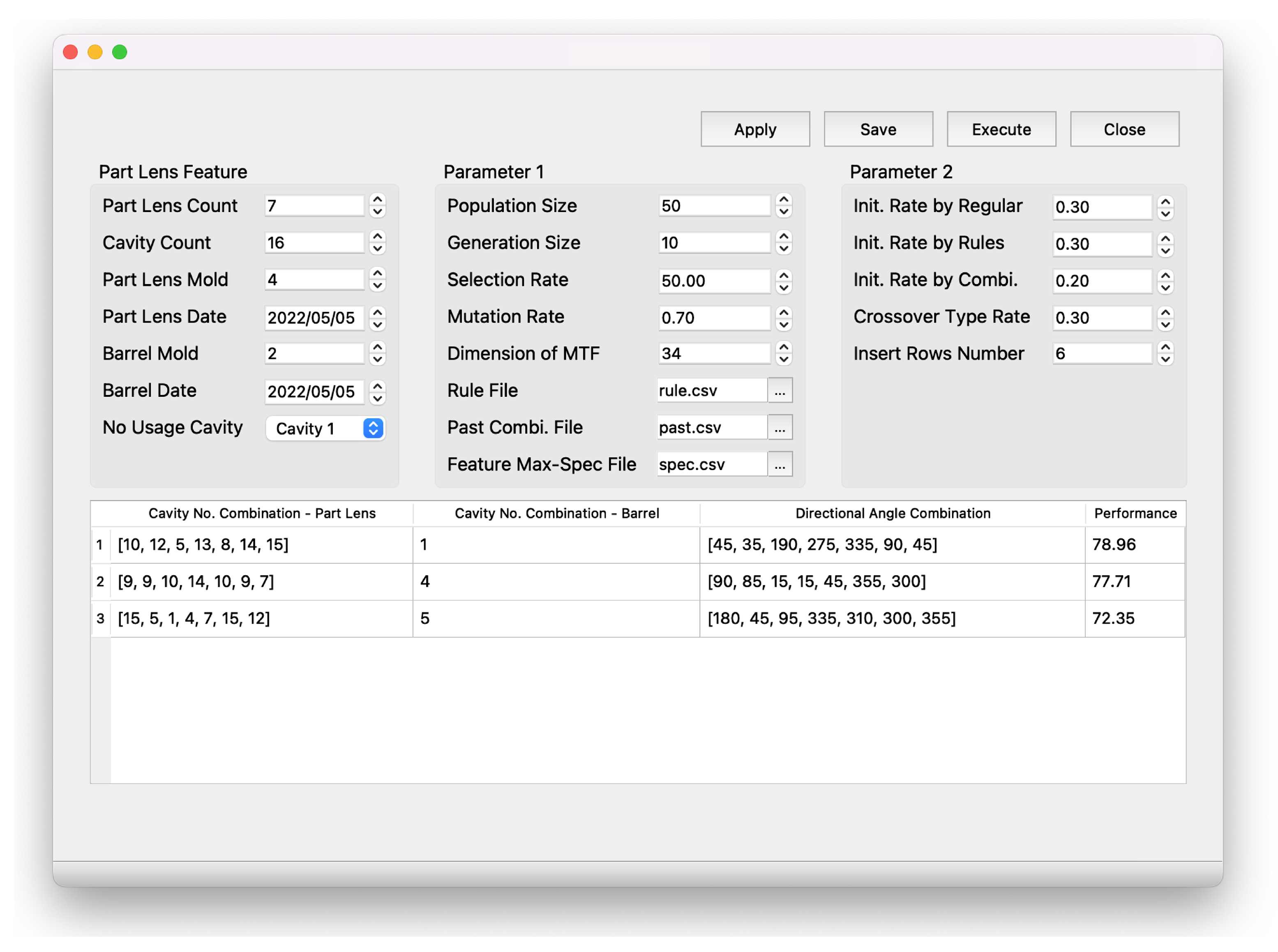


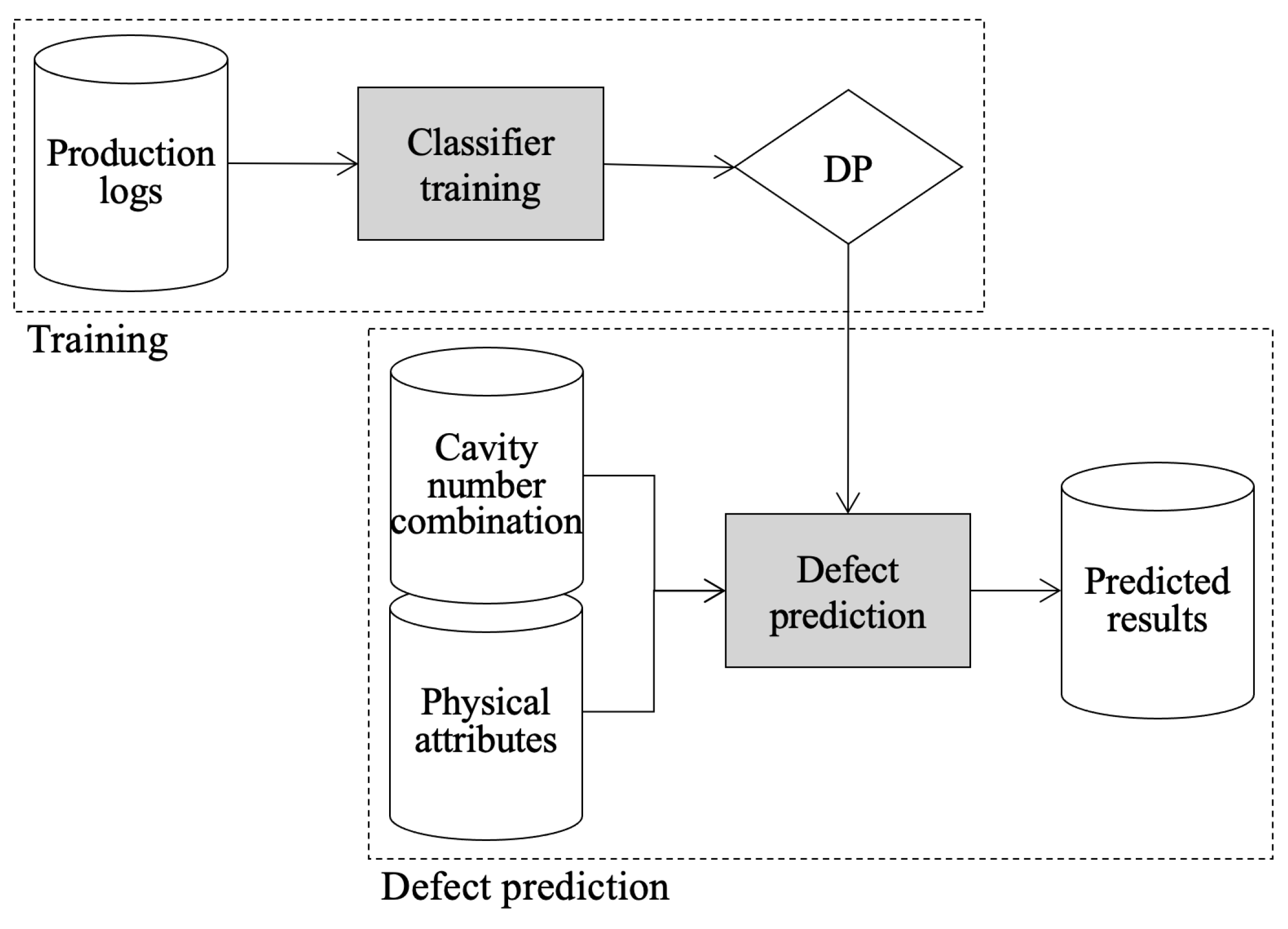

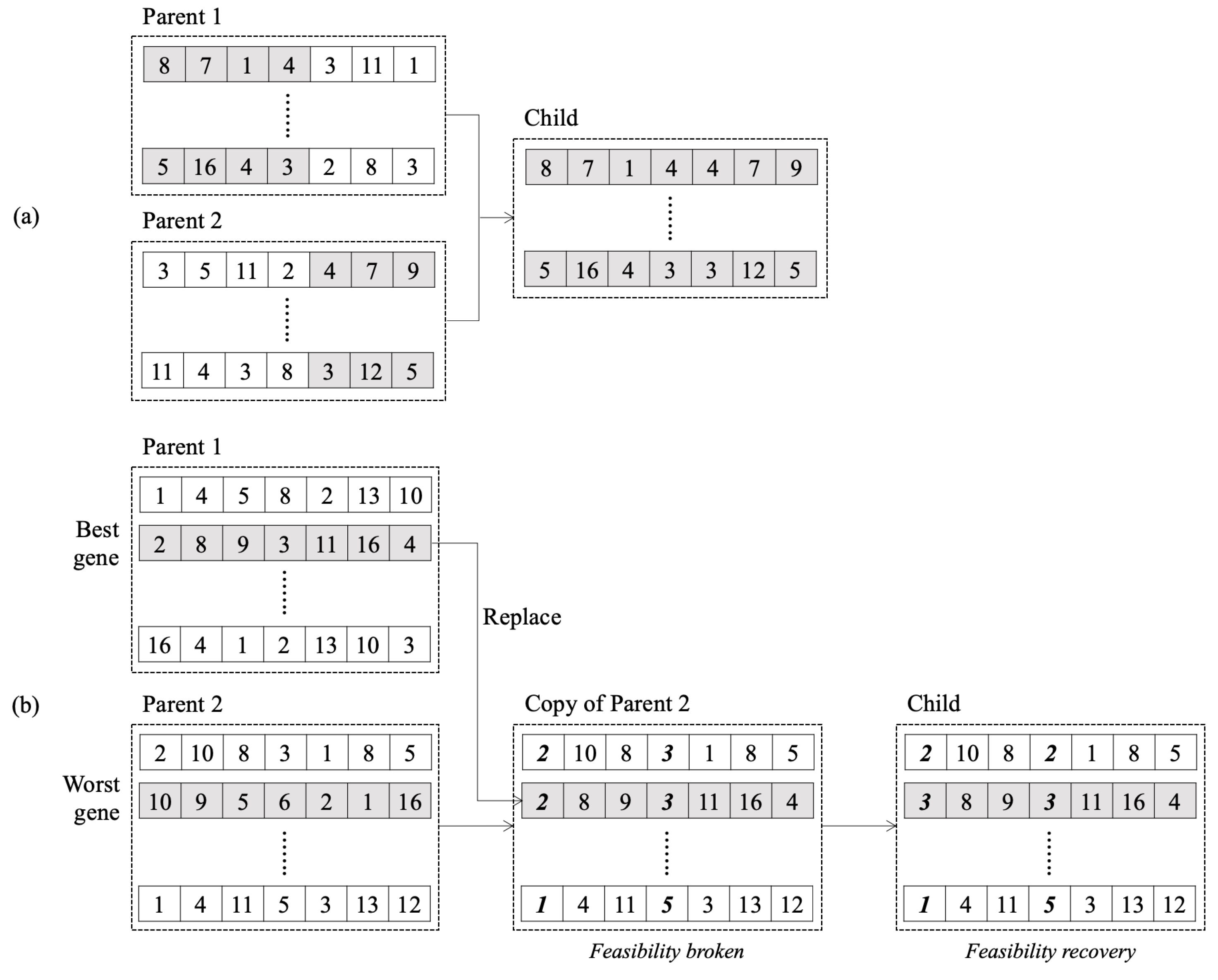


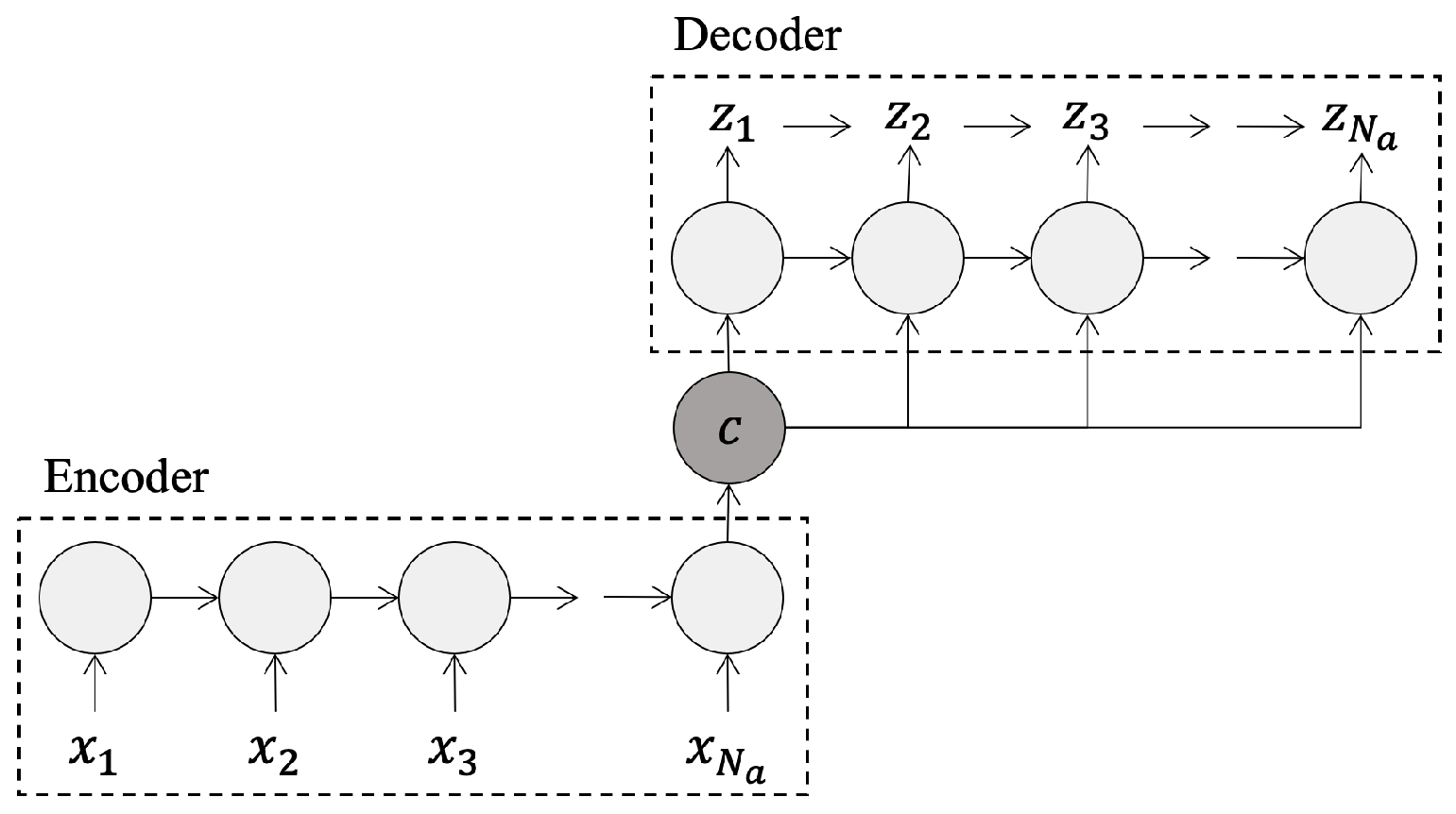
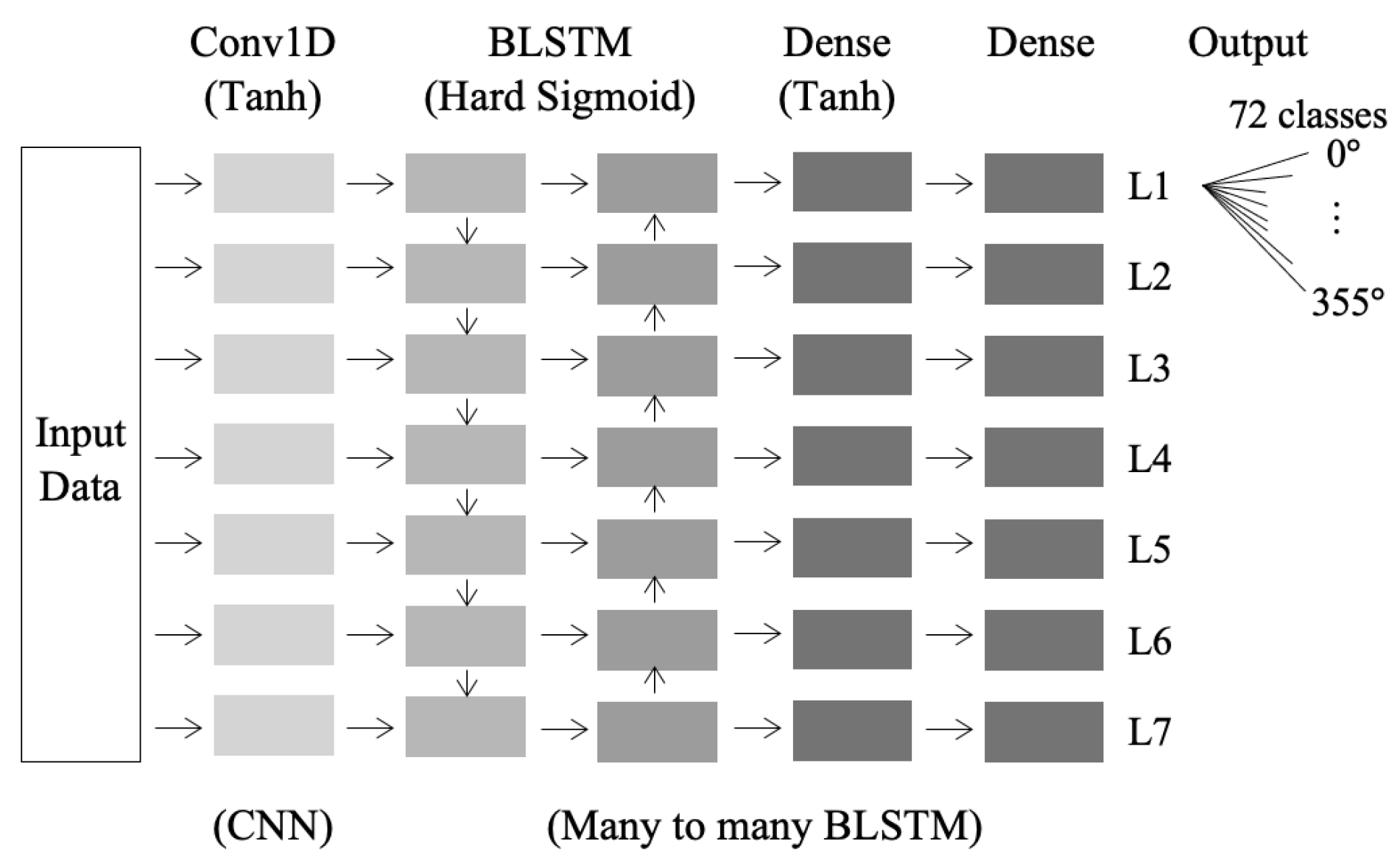
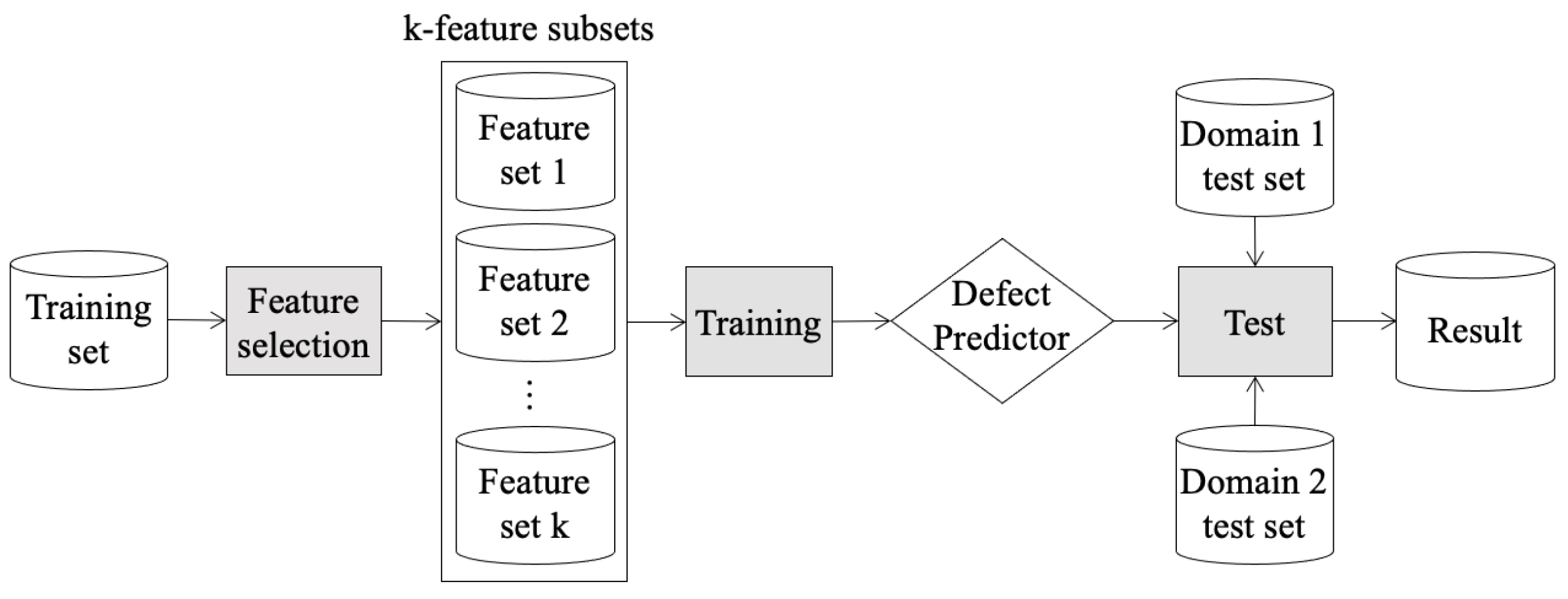
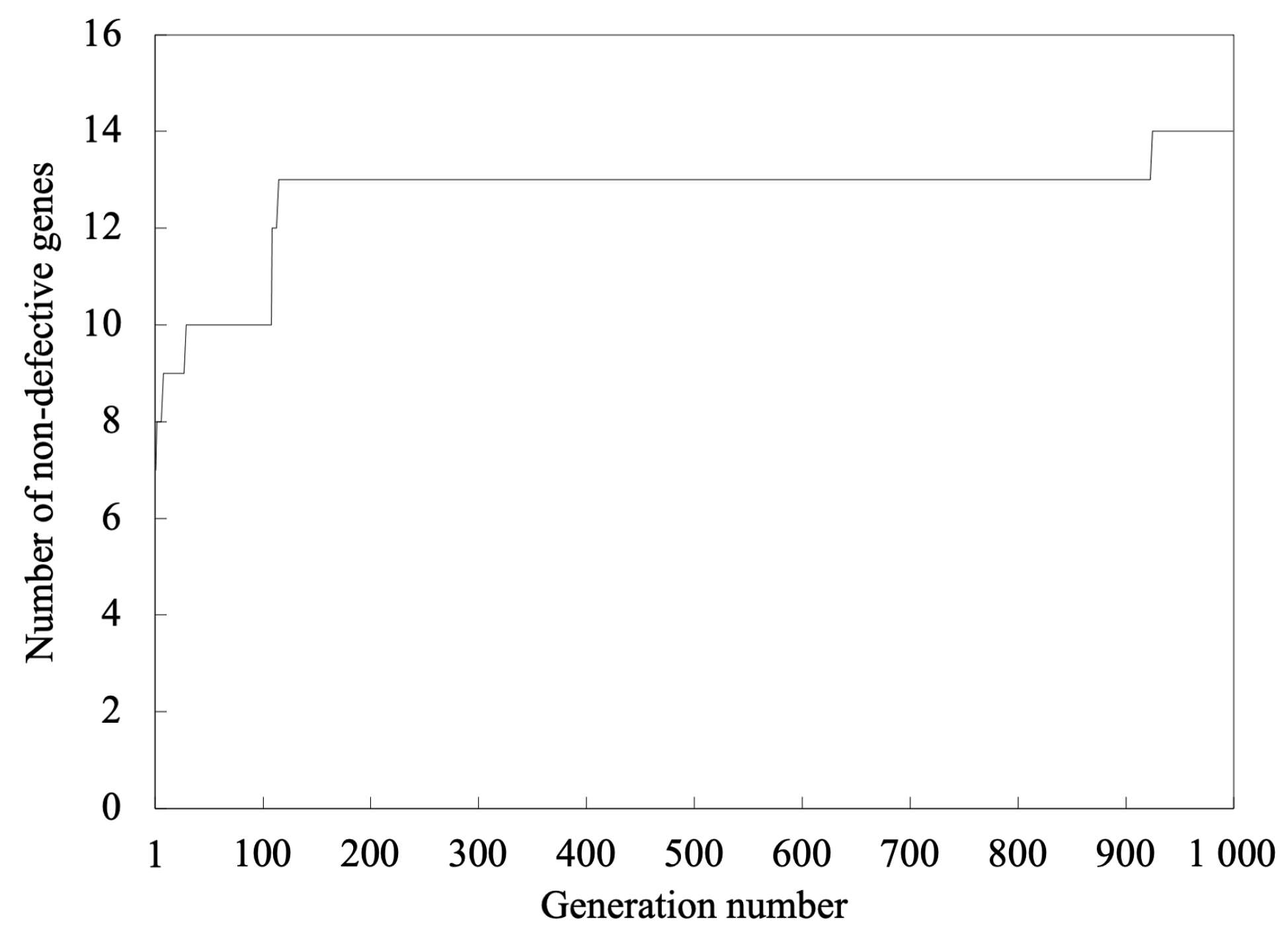

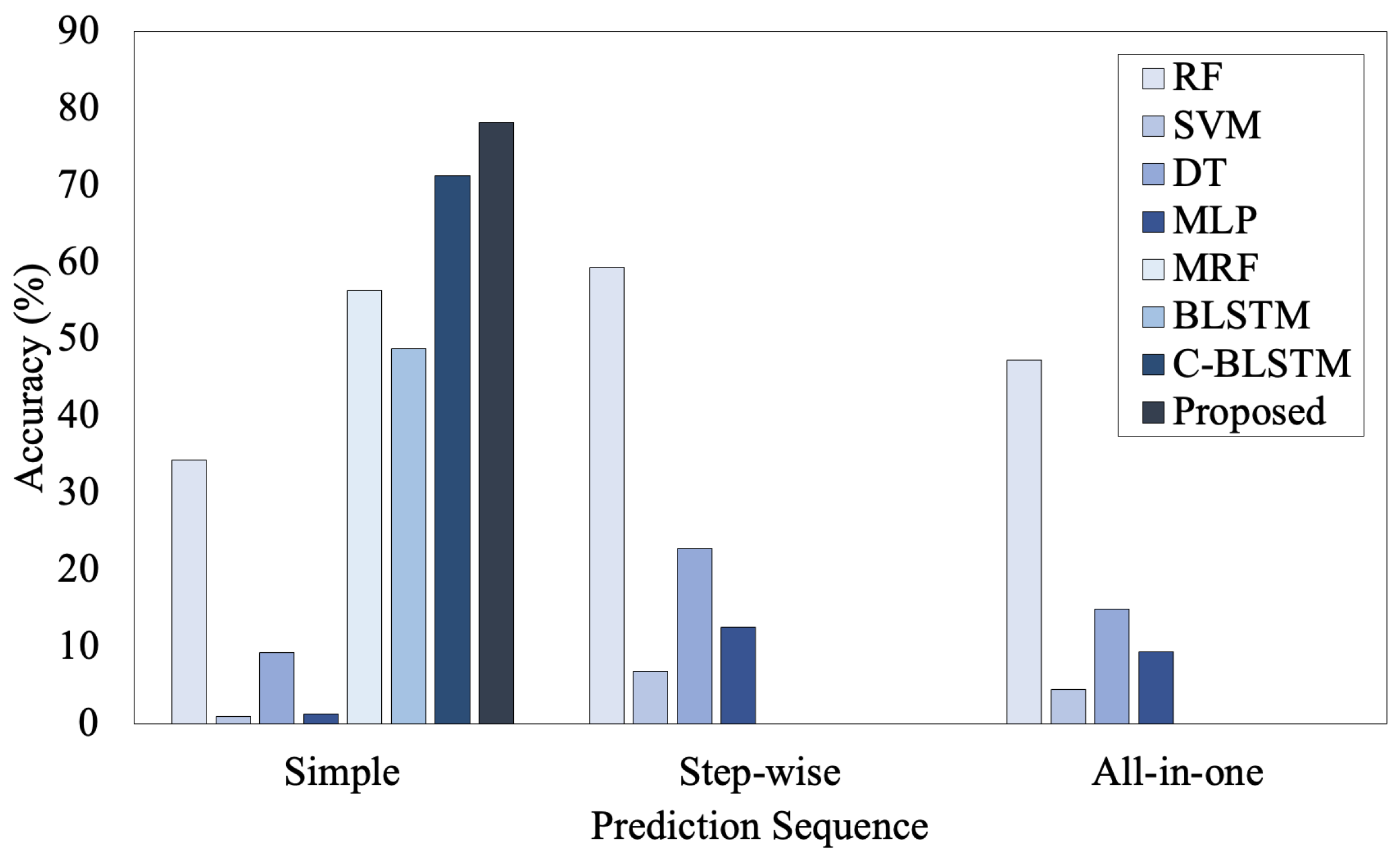
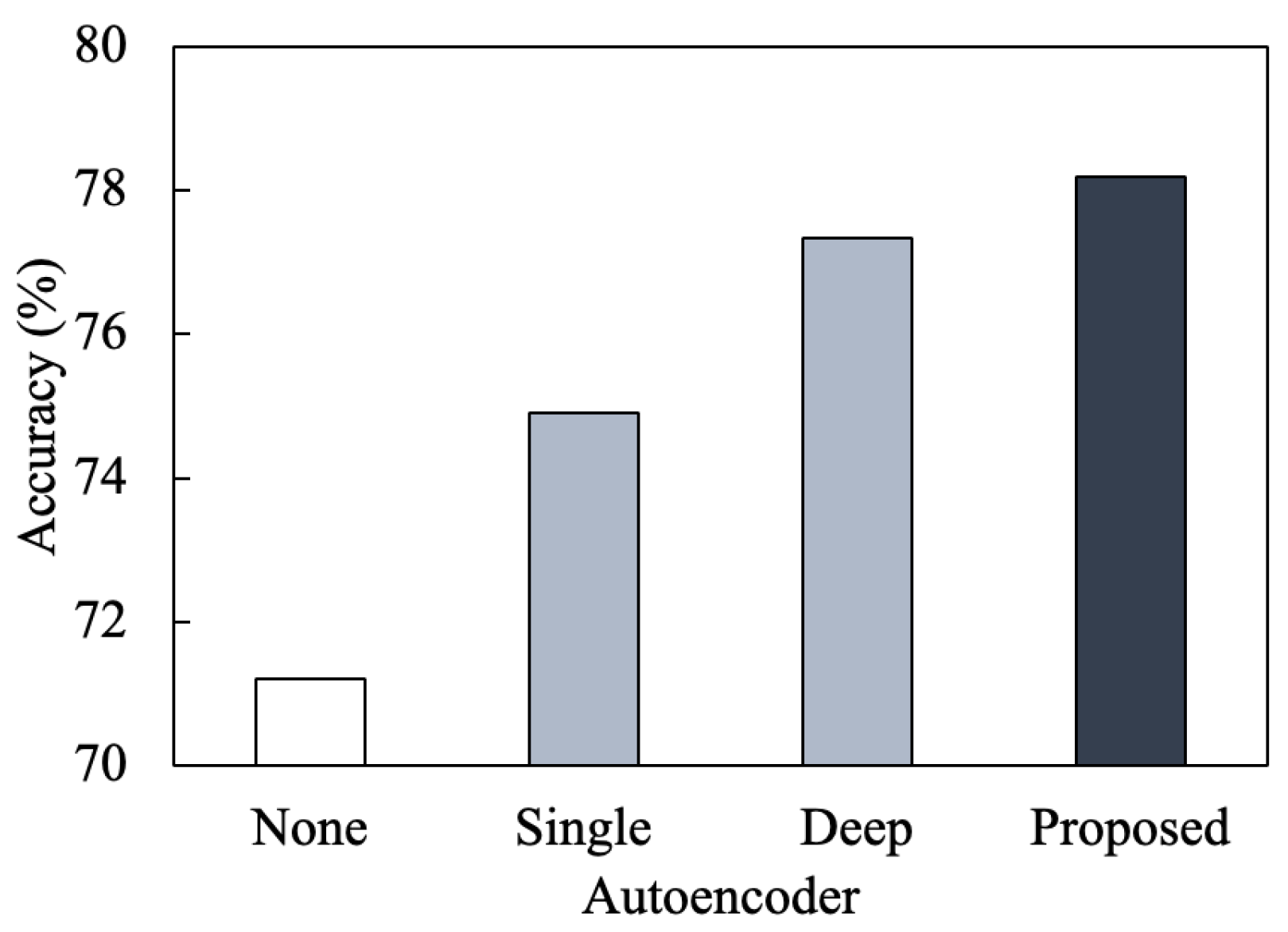
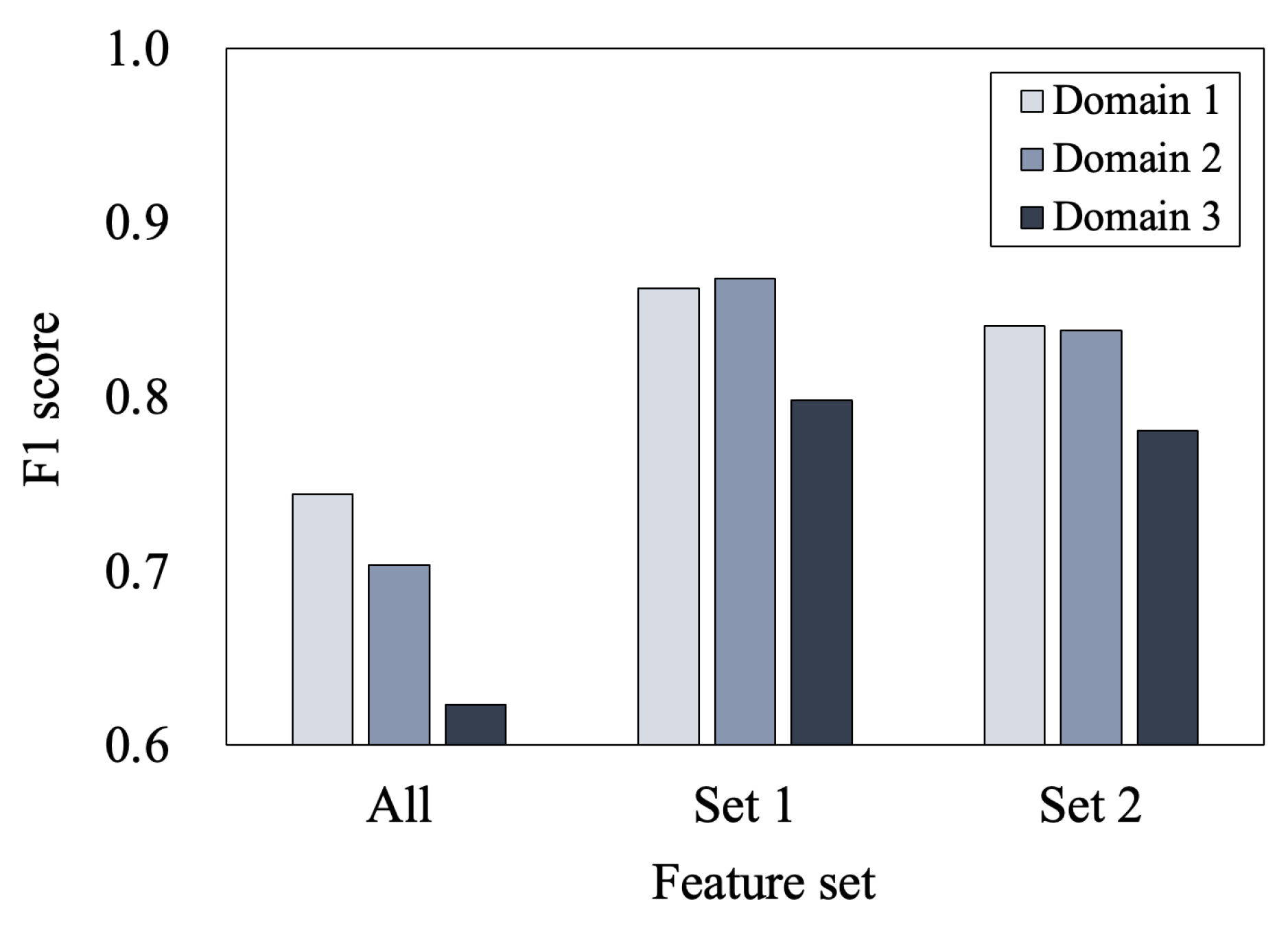
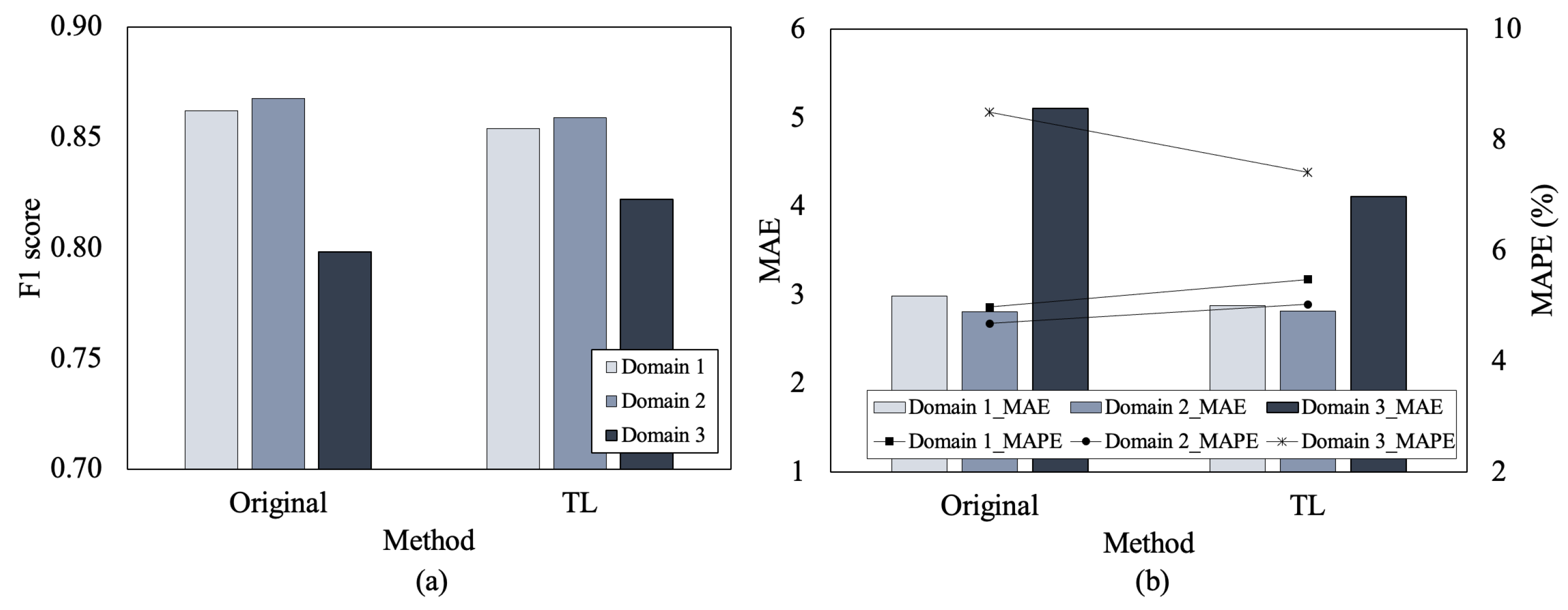
| Environment | Category | |
|---|---|---|
| Original | Deduplicated | |
| Manual test production | 46,615 | 5532 |
| Automatic mass production | 29,451 | 2510 |
| Total | 76,066 | 8042 |
| Method | Description | |
|---|---|---|
| Baseline | SVC | Hyperplane or set of hyperplanes in a high-dimensional space are constructed, and these are used to classify data-points |
| DT | Type of decision support tool that maps decision rules and results into a tree structure | |
| RF | An ensemble learning method that outputs class or mean predictions from multiple decision trees | |
| DNN | Artificial Neural Network consisting of multiple hidden layers between the input and output layers | |
| Imbalance-processed | BBC | An ensemble of meta-estimator that fits base classifiers each on randomly created subsets of the dataset and aggregate the individual predictions |
| BRF | The method randomly under-samples each bootstrap sample to balance the dataset | |
| RUSBoost | Random under-sampling integrating in the learning of an AdaBoost classifier | |
| EEC | An ensemble of AdaBoost learners trained on different balanced bootstrap samples | |
| Combination | Yield (%) | Pass (>75%) |
|---|---|---|
| 1 | 100 | ∨ |
| 2 | 25 | |
| 3 | 50 | |
| 4 | 100 | ∨ |
| 5 | 75 | ∨ |
| 6 | 75 | ∨ |
| 7 | 75 | ∨ |
| 8 | 100 | ∨ |
| 9 | 25 | |
| 10 | 25 | |
| 11 | 25 | |
| 12 | 25 | |
| 13 | 0 | |
| 14 | 0 | |
| Rate (%) | 42.8 | |
Disclaimer/Publisher’s Note: The statements, opinions and data contained in all publications are solely those of the individual author(s) and contributor(s) and not of MDPI and/or the editor(s). MDPI and/or the editor(s) disclaim responsibility for any injury to people or property resulting from any ideas, methods, instructions or products referred to in the content. |
© 2024 by the authors. Licensee MDPI, Basel, Switzerland. This article is an open access article distributed under the terms and conditions of the Creative Commons Attribution (CC BY) license (https://creativecommons.org/licenses/by/4.0/).
Share and Cite
Min, H.; Son, Y.; Choi, Y. Determining Optimal Assembly Condition for Lens Module Production by Combining Genetic Algorithm and C-BLSTM. Processes 2024, 12, 452. https://doi.org/10.3390/pr12030452
Min H, Son Y, Choi Y. Determining Optimal Assembly Condition for Lens Module Production by Combining Genetic Algorithm and C-BLSTM. Processes. 2024; 12(3):452. https://doi.org/10.3390/pr12030452
Chicago/Turabian StyleMin, Hyegeun, Yeonbin Son, and Yerim Choi. 2024. "Determining Optimal Assembly Condition for Lens Module Production by Combining Genetic Algorithm and C-BLSTM" Processes 12, no. 3: 452. https://doi.org/10.3390/pr12030452
APA StyleMin, H., Son, Y., & Choi, Y. (2024). Determining Optimal Assembly Condition for Lens Module Production by Combining Genetic Algorithm and C-BLSTM. Processes, 12(3), 452. https://doi.org/10.3390/pr12030452






